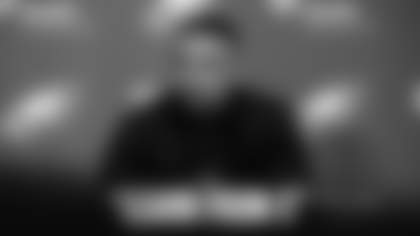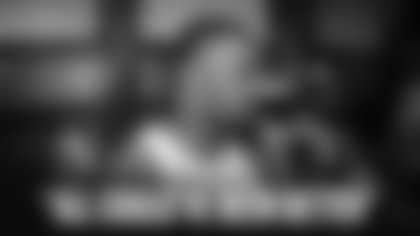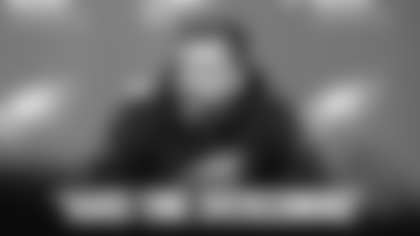
It is sadly ironic that Frank Gifford and Chuck Bednarik passed away within months of each other. They were linked in life, in football and now in death. They certainly were linked in the minds of Eagles fans and will be forever.
It is one of the iconic images in NFL history: Gifford, the great New York Giants halfback, unconscious on the turf and Bednarik, the legendary Eagles linebacker, dancing over him. Bednarik had delivered a thunderous hit on Gifford and forced a fumble that secured a 17-10 victory that helped lift the Eagles to their last world championship. The play still resonates in the rivalry of the two teams.
Giants fans have always spoken of it as a dirty play and Bednarik as a dirty player. For years on Monday Night Football, Howard Cosell would refer to "the day Chuck Bednarik blindsided you, Giff, at Yankee Stadium." Gifford never saw it that way and said so repeatedly. He always said Bednarik did nothing wrong.
"It was a great hit delivered by a great football player," Gifford once told me. "There was nothing cheap or dirty about it."
In 2010, on the 50th anniversary of "The hit," Gifford told Dave Anderson of the New York Times: "Chuck hit me exactly the way I would have hit him. With his shoulder, a clean shot. That's football."
It said a lot about Gifford, who died Sunday at age 84, that he never went along with the popular narrative. Rather, he spoke about the respect he had for Bednarik, both before and after the hit, and the friendship they shared after football. They frequently were paired in celebrity golf tournaments and if Bednarik teased Gifford about the play (which he often did) Gifford was usually the first to laugh.
Mourners paid tribute to one of the greatest players to ever suit up for the Philadelphia Eagles in Pro Football Hall of Fame linebacker and center Chuck Bednarik, who passed away last Saturday at the age of 89 ...

Chuck Bednarik's widow, Emma, shows the game ball presented to her by Chairman and CEO Jeffrey Lurie

A photo collage of Chuck Bednarik's career and life
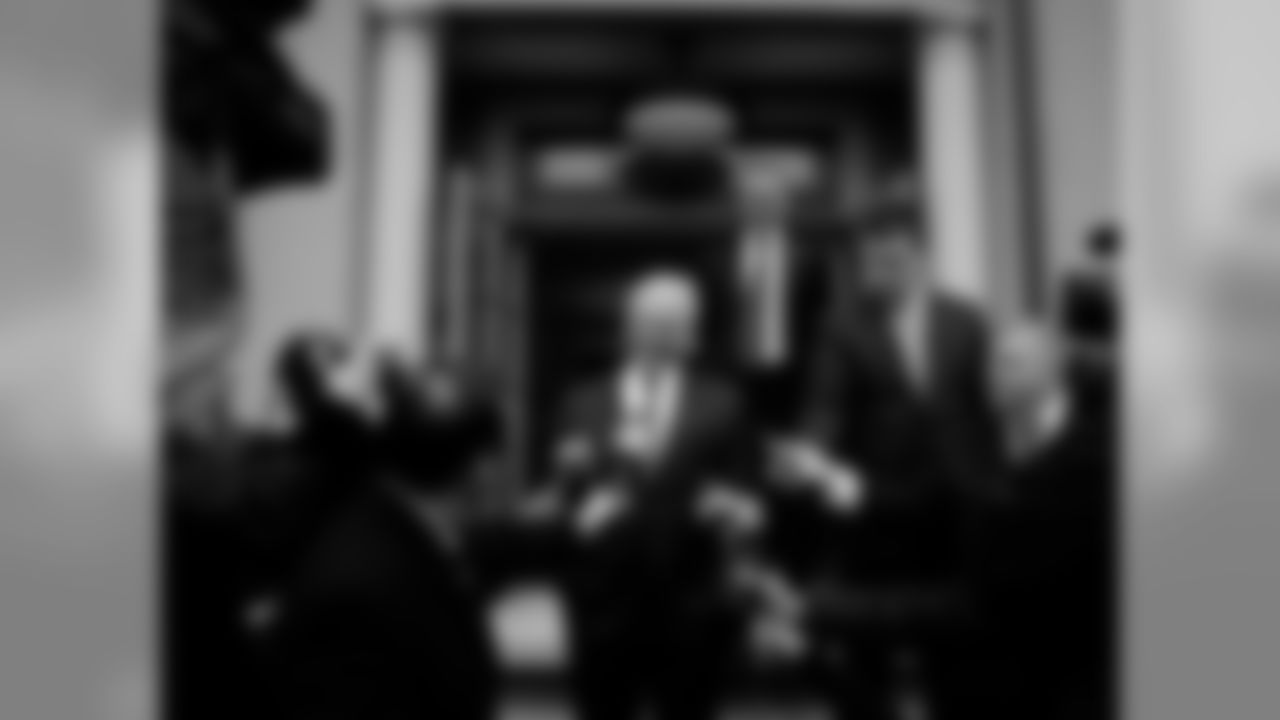
Chairman and CEO Jeffrey Lurie smiles as he reminisces on the lasting impression that Bednarik left on Philadelphia
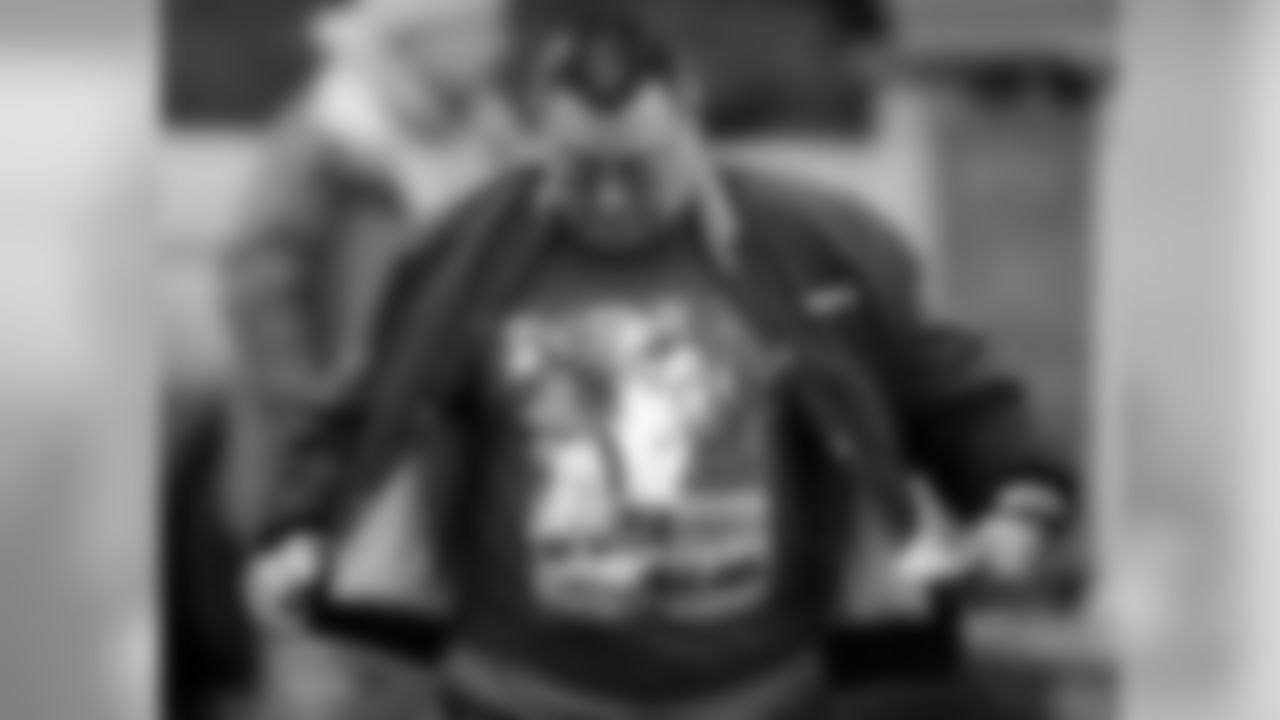
An Eagles fan showcases his shirt for photographers at today's viewing
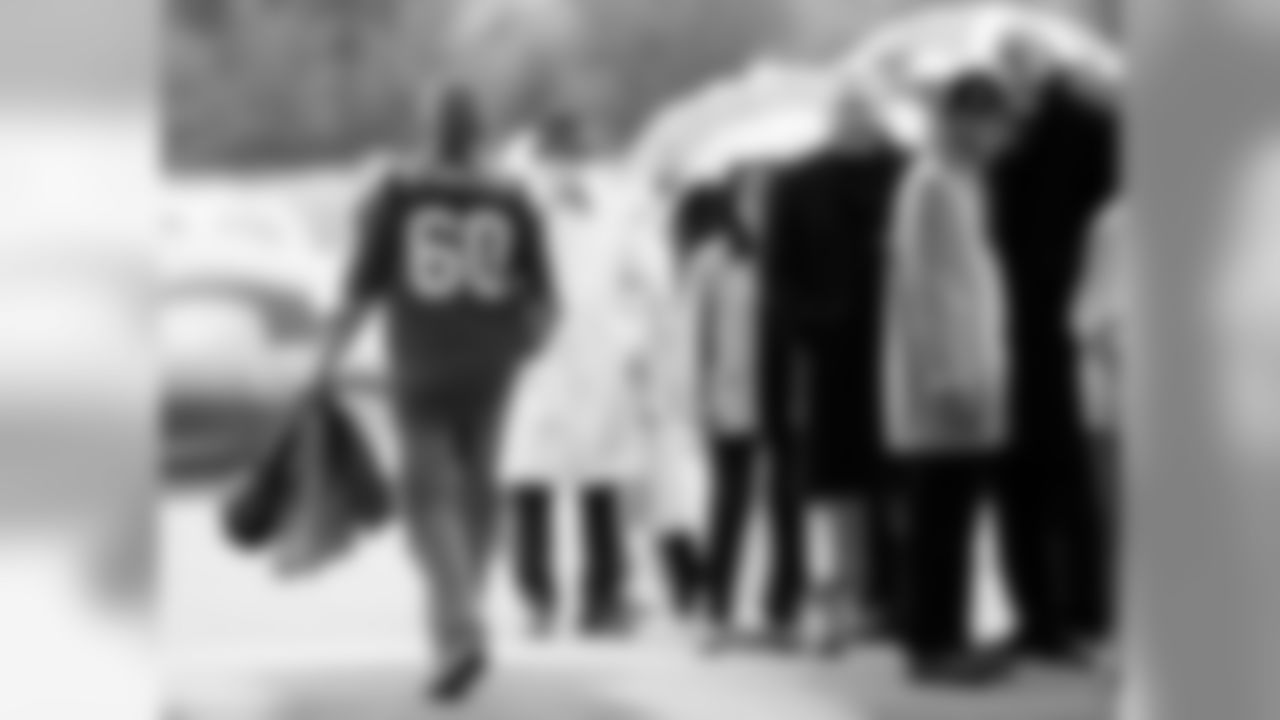
Fans filed in for Bednarik's viewing
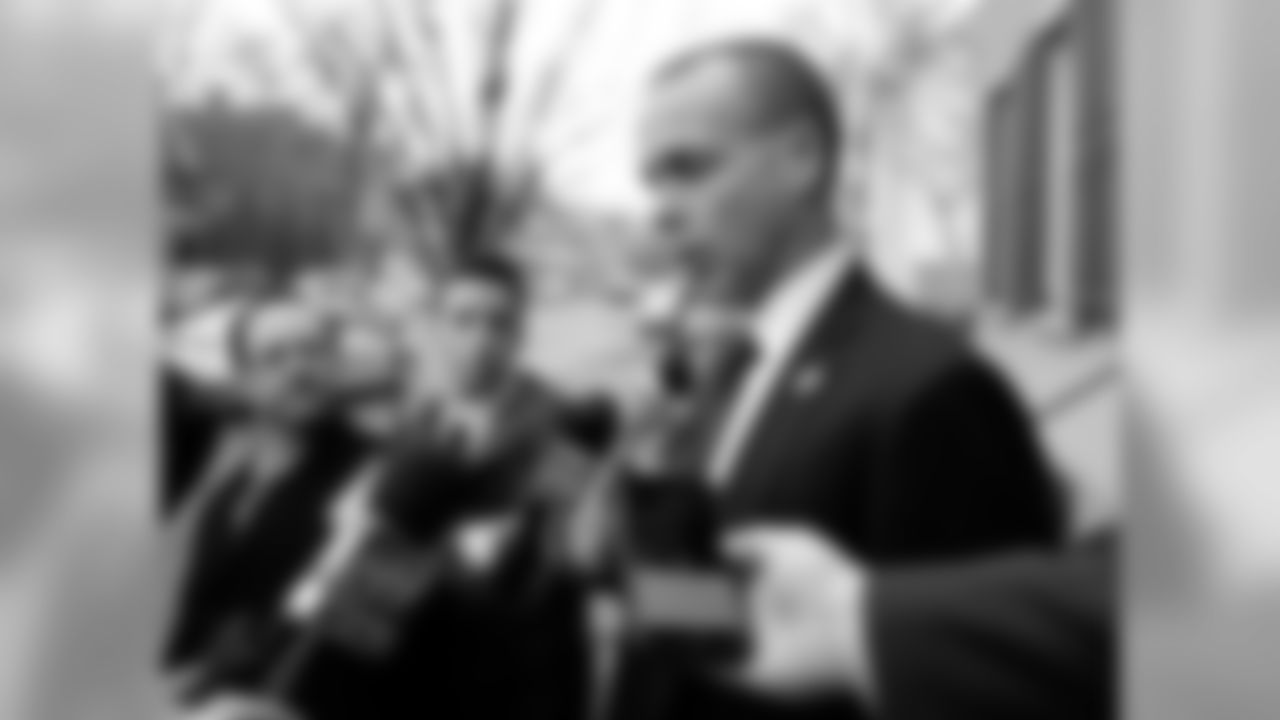
Eagles president Don Smolenski spoke to the media outside of the viewing

Former head coach Dick Vermeil attended today's viewing for Bednarik

Eagles alumni Pete Retzlaff was present for the viewing
Gifford was a gracious man who made a huge impact on the sport of professional football, both on the field and off. He was a great player for 12 seasons with the New York Giants, an NFL MVP in 1956, and he was the face and voice of Monday Night Football for more than two decades. He helped sell the game at a time when it still needed selling.
He was handsome, he was likeable and whether he was on the field or in the broadcast booth, he made it look easy. It wasn't really. He actually came up the hard way, born to a working class family (his father was an oil field worker) in Bakersfield, California, a kid who didn't have the grades to get into Southern Cal (he needed a year of junior college). If it wasn't for football, he said, he would have gone to work on an oil rig next to his father.
But Gifford did great things on the field at USC and the Giants selected him in the first round of the 1952 NFL Draft. Like Bednarik, Gifford played both ways in the NFL and excelled at it. He made the Pro Bowl as a halfback, a flanker and also a defensive back. He was an excellent passer and Vince Lombardi, then a Giants assistant, put the halfback option pass into the playbook just for Gifford. He threw 14 touchdown passes, still an NFL record for a non-quarterback.
Gifford's impact extended beyond the playing field. He was the glamour boy of pro football in the 1950s. At a time when America was just discovering the NFL, Gifford was the game's Don Draper. He was this good-looking, well-spoken guy playing in the media capital of New York and doing everything from winning MVP awards to modeling sweaters and selling hair products on TV. Men envied him and women swooned over him.
As a player, Gifford was versatile and superb in the clutch. He totaled 9,862 yards in his career including 3,609 yards rushing and he scored 80 touchdowns. He missed the entire 1961 season as a result of the Bednarik hit and he could have stayed retired - he was already well established as a broadcaster in New York - but he came back in 1962 as a flanker and played three more years. He was voted into seven Pro Bowls back in a time when the Pro Bowl still meant something.
I had the good fortune of getting to know Gifford and found him to be great company. I enjoyed it whenever he would tell stories about living in New York in the '50s when Manhattan was the center of everything. He would talk about hanging out with Frank Sinatra, Joe DiMaggio and all the big stars from Broadway. And Gifford, with his face on the cover of Life Magazine, was as big as any of them.
He once told a great story about walking into Toots Shor's restaurant one day. The owner met Gifford at the door and said there was a guy in the back who was dying to meet him.
"I've been talking to the guy for an hour and he keeps talking about you," Shor told Gifford. "I told him you come in a lot so it's great you're here. I'll introduce you."
Gifford asked Shor who the man was. Shor said he didn't catch his name.
"He's a writer, I think," Shor said.
As they approached the table, the man looked up and Gifford's jaw dropped. It was Ernest Hemingway.
"So I wound up having dinner with Ernest Hemingway," Gifford said. "What an experience."
That was New York in the 1950s. That was Frank Gifford.
An award-winning writer and producer, Ray Didinger was inducted into the Pro Football Hall of Fame in 1995. He has also won six Emmy Awards for his work as a writer and producer at NFL Films. The five-time Pennsylvania Sportswriter of the Year is a writer and analyst for Comcast SportsNet. Didinger will provide Eagles fans a unique historical perspective on the team throughout the year for PhiladelphiaEagles.com. You can read all of his Eagles History columns here. He is also the author of The New Eagles Encyclopedia. !
- VIEW: Forever An Eagle: Our Tribute To Chuck Bednarik
- READ: Didinger: Bednarik Is The Greatest All-Time Eagle
- VIDEO: Remembering A Legend: Chuck Bednarik
- VIDEO: In His Own Words: Chuck Bednarik's Journey
- READ: The Hit Still Resonates After All These Years
- VIDEO: Merrill Reese On Chuck Bednarik
- VIDEO: Highlights From The 1960 NFL Championship
- PHOTOS: An In-Depth Look At Bednarik On And Off The Gridiron

















